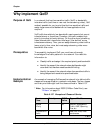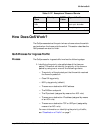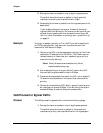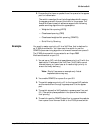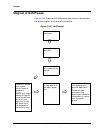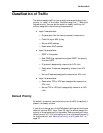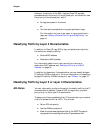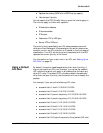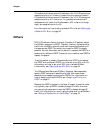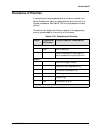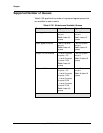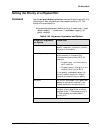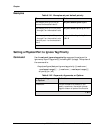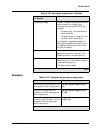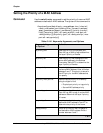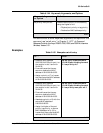
-10
Chapter
Avaya P550R, P580, P880, and P882 Multiservice Switch User Guide, v5.3.1
All packets that have a source IP address in the 10.10.60 subnet are
assigned a priority of 1(fwdx is 1 based, but priorities are 0 based.)
All packets that have a source IP address in the 10.10.70 subnet are
assigned a priority of 3, and so on. Any packets whose source IP
addresses do not match the IP addresses in ACL rules one through
eight, are assigned a priority of 6.
For information on how to set up a default ACL rule, see “Setting Up
a Default ACL Rule” on page 30.
Diffserv
RFC 2475 defines a field in the layer 3 header of IP packets, called
the DiffServ code point (DSCP). Typically, hosts or routers sending
traffic into a DiffServ network mark each transmitted packet with
the appropriate DSCP. The switch then uses the DSCP to classify
packets. You can alternately set the switch to replace the DSCP in a
packet with a different DSCP. The switch then uses the new DSCP to
classify the packet.
To set the switch to classify IP packets by their DSCP or to replace
the DSCP with a different DSCP, you must set up an ACL rule. For
information on how to set up an ACL rule to enable DiffServ
functionality, see “Setting Up an ACL Rule” on page 23.
The Differentiated Services (DiffServ) Mapping Table associates
specific DSCP values with specific priorities. You create these
associations by assigning priorities to DSCPs. For information on
how to assign priorities to DSCPs, see “Assigning a Priority to a
DSCP” on page 21.
Because the DSCP is located in the layer 3 header, the switch does
not typically use the DSCP to classify bridged IP traffic. However,
you can set a physical port to use the DSCP to classify bridged IP
traffic. For information on how to set a physical port to use DiffServ,
see “Setting a Physical Port to Use DiffServ” on page 19.



